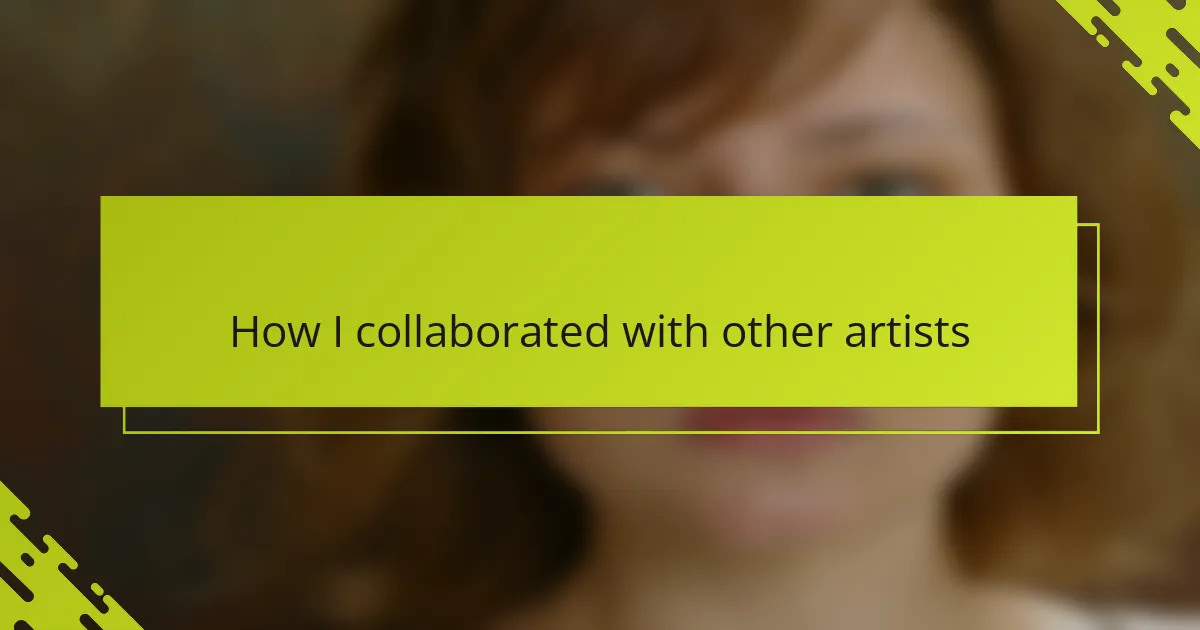Key takeaways
- Queer women culture thrives on shared stories and creating safe spaces for dialogue, fostering vulnerability and solidarity.
- Collaboration in art enriches creativity by blending diverse perspectives and experiences, reinforcing trust and community among artists.
- Effective collaboration requires clear communication, flexibility in roles and deadlines, and setting mutual respect as a foundation for partnership.
- Personal experiences in collaboration highlight the transformative power of vulnerability, leading to deeper connections and authentic artistic expression.
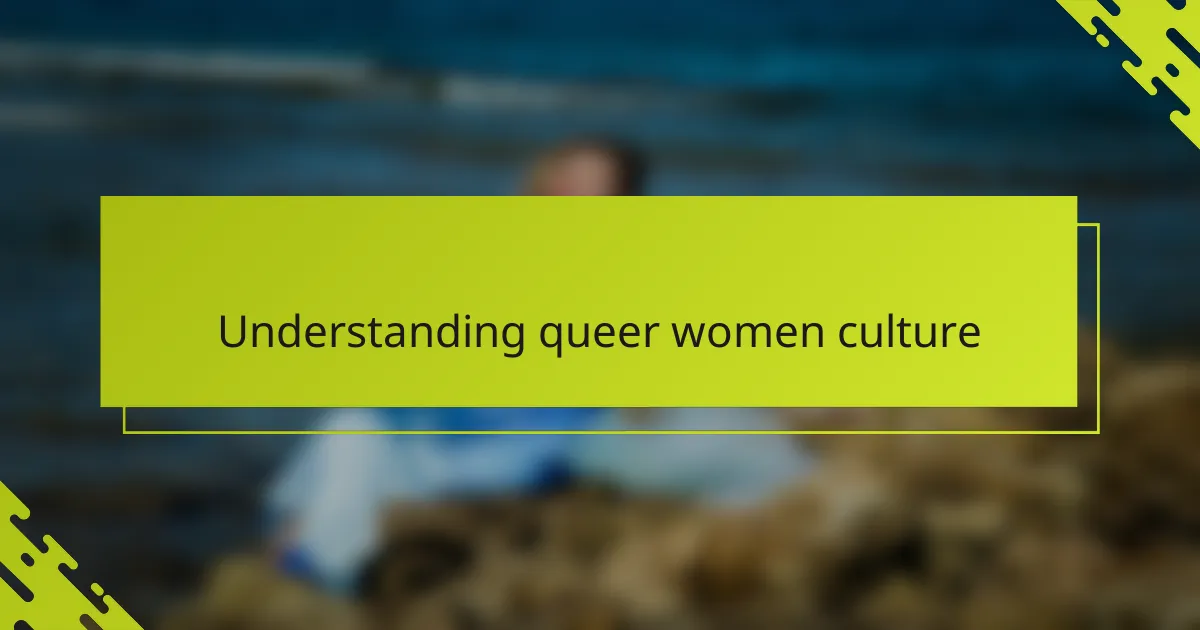
Understanding queer women culture
Queer women culture is a vibrant tapestry woven from diverse identities, experiences, and expressions. I’ve found that truly understanding it requires listening—not just with my ears, but with genuine empathy. Have you ever noticed how shared stories create an unspoken connection that feels both comforting and empowering?
When I first began collaborating with queer women artists, I was struck by the fluidity and resilience that define our community. It’s not just about labels; it’s about embracing complexity and finding beauty in the spaces between. This perspective has shaped how I approach creative partnerships, fostering environments where authenticity thrives.
What does it mean to belong to queer women culture? For me, it’s about creating safe spaces for dialogue and expression, where vulnerability is met with solidarity. It’s a constant learning curve, a journey marked by moments of joy, struggle, and profound understanding that challenge me to grow alongside others.
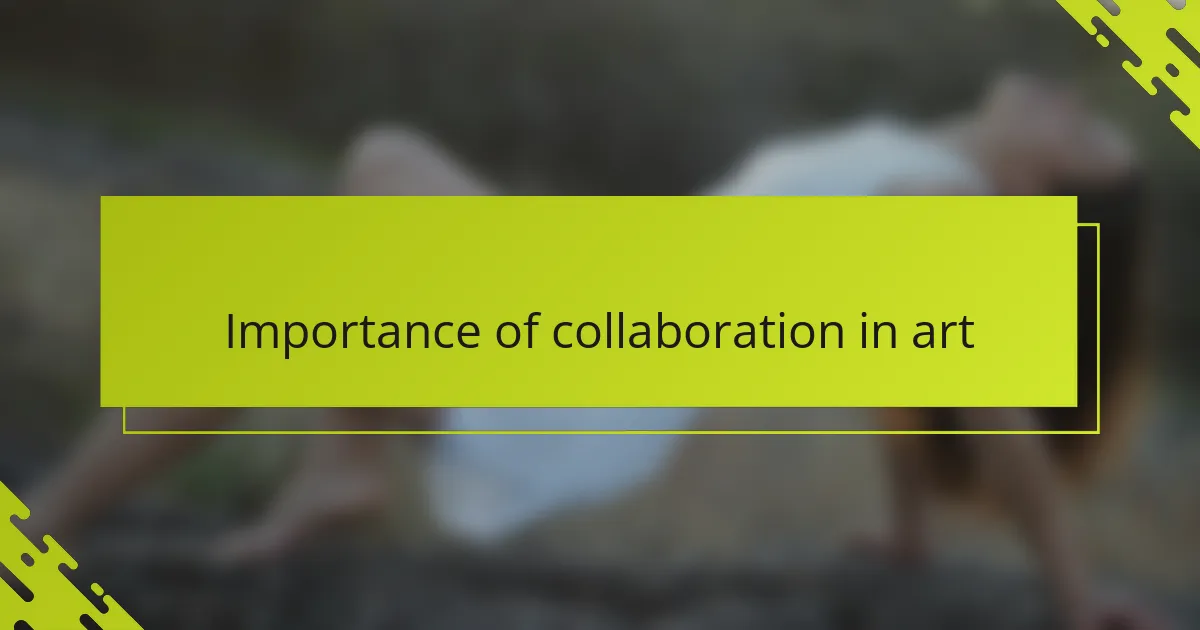
Importance of collaboration in art
Collaboration in art opens doors to perspectives I might never encounter alone. When I worked with other queer women artists, their unique lenses challenged my own assumptions, sparking ideas that felt both unexpected and deeply resonant. Have you ever noticed how merging different creative energies can transform a simple concept into something electric?
There’s an emotional richness in shared creation that I cherish. It’s not just about combining talents, but about weaving our stories and struggles into the work, making it feel alive and real. I remember a project where a collaborator’s vulnerability inspired me to be more honest in my expression, and that honesty became the heart of our piece.
In my experience, collaboration also builds trust and community, which are essential for queer women navigating a world that often misunderstands us. Working together reminds me that our voices are stronger in chorus, and that art becomes a powerful act of solidarity. Isn’t that the true magic of collaboration?

Finding and connecting with queer women artists
Finding other queer women artists often felt like searching for pieces of a puzzle scattered across different spaces. I remember scrolling through online platforms late at night, feeling both hopeful and hesitant, wondering if I would find others who shared not only my identity but also my creative vision. Have you ever felt that mix of excitement and vulnerability when reaching out to someone new?
Community events and queer art shows became unexpected treasure troves for connections. There was this one time at a small gallery opening where a simple conversation over coffee turned into an ongoing collaboration that broadened my understanding of queer narratives. Those moments of serendipity taught me that genuine connection often starts with just a willingness to show up and listen.
Social media also played a surprising role, acting as a bridge to artists beyond my immediate circles. However, it wasn’t about the number of followers or catchy profiles, but about engaging authentically—commenting on a post, sharing ideas, or even sliding into DMs with respect and curiosity. I found that asking thoughtful questions led to conversations that sparked both friendship and creative partnerships.
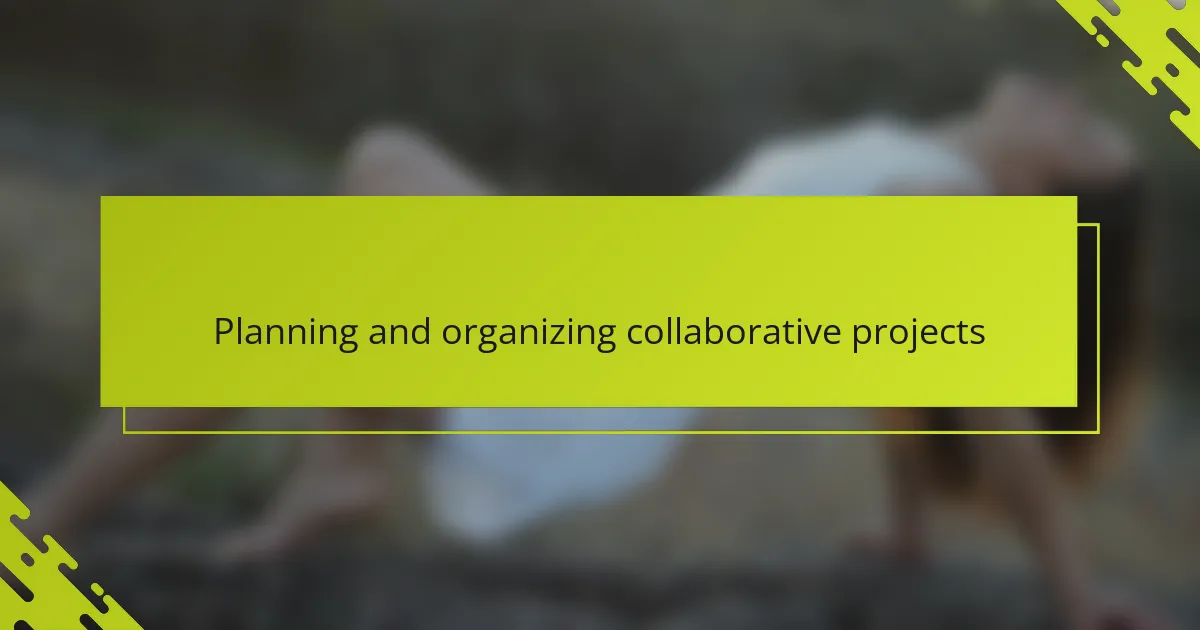
Planning and organizing collaborative projects
Organizing our collaborative projects always begins with a shared vision—something that excites everyone and feels true to our community. I remember once mapping out ideas over endless cups of tea, each of us bringing a different spark, yet carefully listening so nothing got lost in the enthusiasm. Have you noticed how clear communication at the start can prevent so many headaches later on?
One thing that’s become clear to me is the importance of setting flexible deadlines and roles. Early on, I tried to stick to rigid plans, but queer women’s lives are so vibrant and sometimes unpredictable—it’s better to build in breathing room. That way, collaboration feels like a dance, not a choreographed performance.
I also make a point to create spaces where everyone feels heard, whether in person or online. Checking in regularly, asking how people are feeling about the project, and adjusting as we go has saved countless projects from stalling. Isn’t that mutual respect the foundation of any meaningful creative partnership?
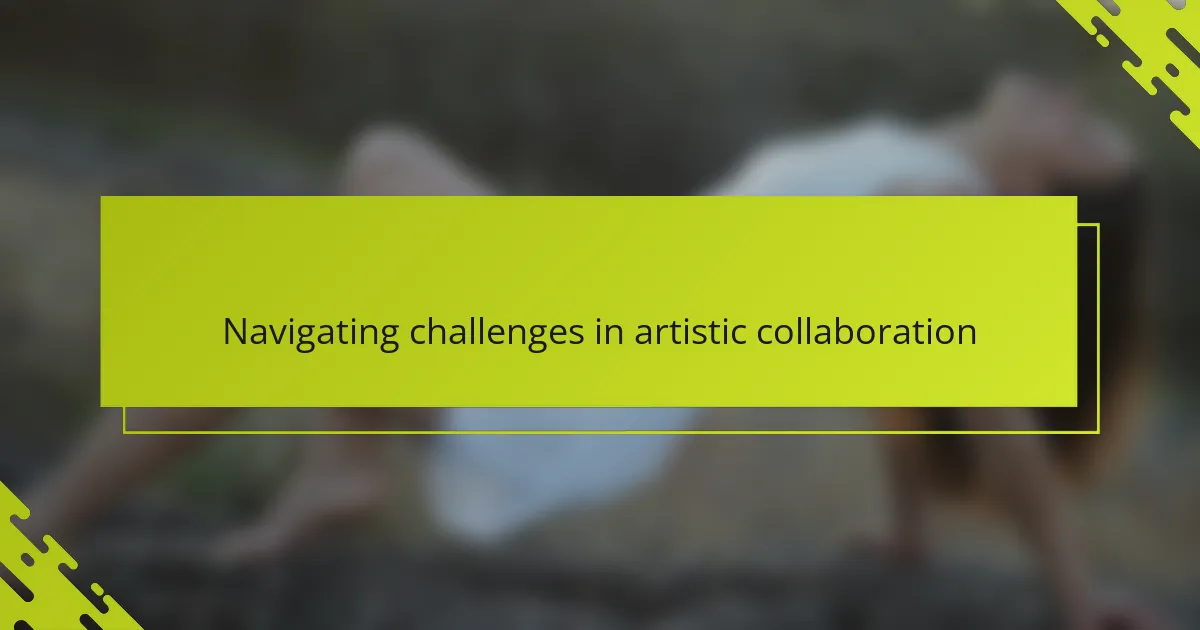
Navigating challenges in artistic collaboration
Sometimes, tensions arise when our creative visions don’t align. I’ve discovered that addressing these moments head-on, with patience and openness, transforms friction into fertile ground for growth. Have you ever felt that initial resistance flip into a breakthrough just by sharing honestly?
Managing different communication styles can also be tricky. Early in a collaboration, I struggled when someone’s directness felt harsh, until I realized it was their way of showing commitment. Learning to interpret and respect these differences deepened our connection and enriched the work we made together.
Balancing personal boundaries with collective goals is another challenge I’ve faced. Protecting my emotional energy while staying engaged required trust-building over time. Have you noticed how setting clear limits doesn’t stifle creativity but actually creates safer, more sustainable spaces for collaboration?

Sharing personal collaboration experiences
There was a time when I partnered with a painter whose work was deeply rooted in her queer identity, and through our collaboration, I found myself peeling back layers of my own story I hadn’t fully explored before. Have you ever been surprised by how another artist’s perspective can open new doors within yourself? That experience taught me that collaboration isn’t just about merging styles—it’s about mutual discovery.
Sometimes the most memorable moments come from simple acts, like late-night video calls filled with laughter and brainstorming, where ideas bounced freely despite the miles between us. I remember feeling a rush of excitement and connection, even through a screen, that made the challenges of distance vanish. Doesn’t that remind you how art can bridge even the widest gaps?
One lesson I carry with me is how vulnerability fuels collaboration. When I shared my fears about a project—and was met with empathy rather than judgment—it created a safe space where creativity could truly blossom. Have you noticed how sharing openly, even when it feels risky, often leads to the most authentic and powerful work?
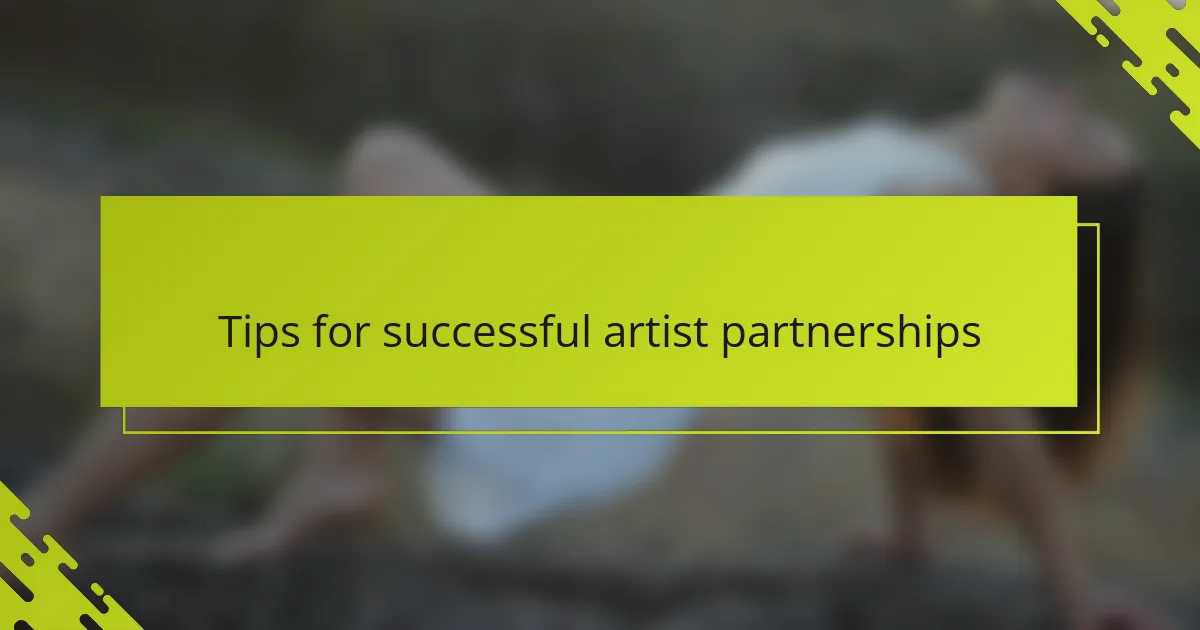
Tips for successful artist partnerships
Successful artist partnerships, in my experience, thrive on honest communication—checking in often and voicing concerns before they fester. Have you ever noticed how simply asking, “How are you feeling about this?” can transform the whole dynamic? It’s that small act of openness that builds trust and keeps the creative energy flowing.
Flexibility is another key. I’ve learned that being willing to adapt roles or deadlines not only eases pressure but also honors everyone’s unique rhythms. When a collaborator once needed extra time because of life’s unpredictability, I found that embracing that space made our work richer, not weaker. Could any rigid schedule capture the fluidity of queer women’s lives anyway?
Lastly, grounding partnerships in mutual respect makes all the difference. Recognizing each other’s boundaries without judgment has helped me avoid burnout and kept collaborations enjoyable. Isn’t it amazing how respect can turn a project from a task into a shared journey? For me, that respect is the heartbeat of every successful creative partnership.
